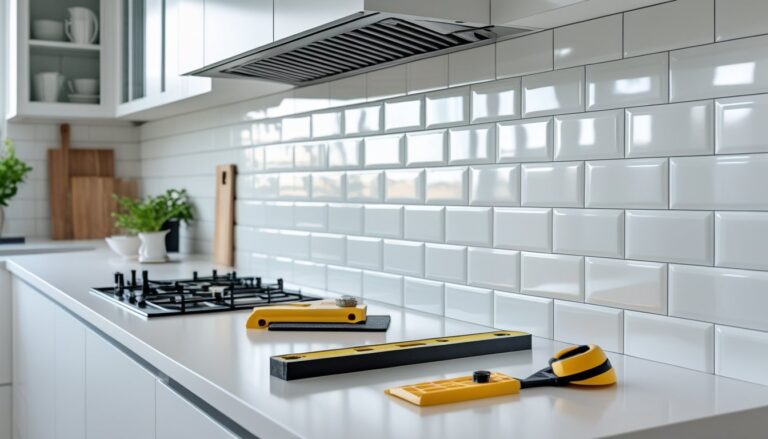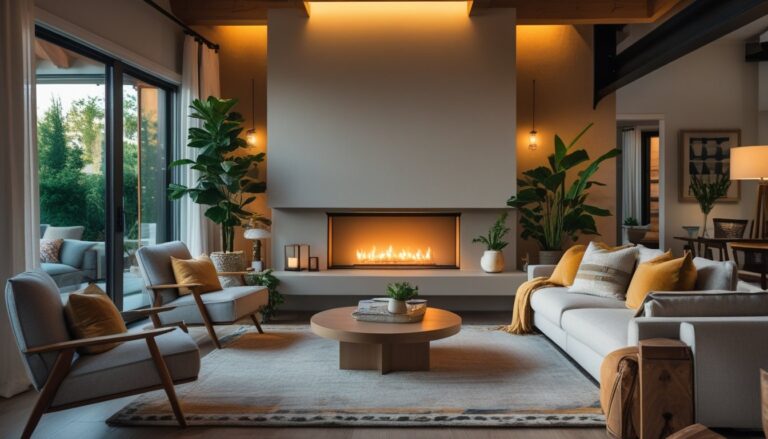7 Bathroom Tiles Design Ideas for Modern and Stylish Spaces
Bathroom tile design plays a key role in shaping the look and feel of any bathroom space. It affects both the style and the function of the room, making it important to choose the right option. Understanding different bathroom tile designs helps create a space that suits personal taste and practical needs.
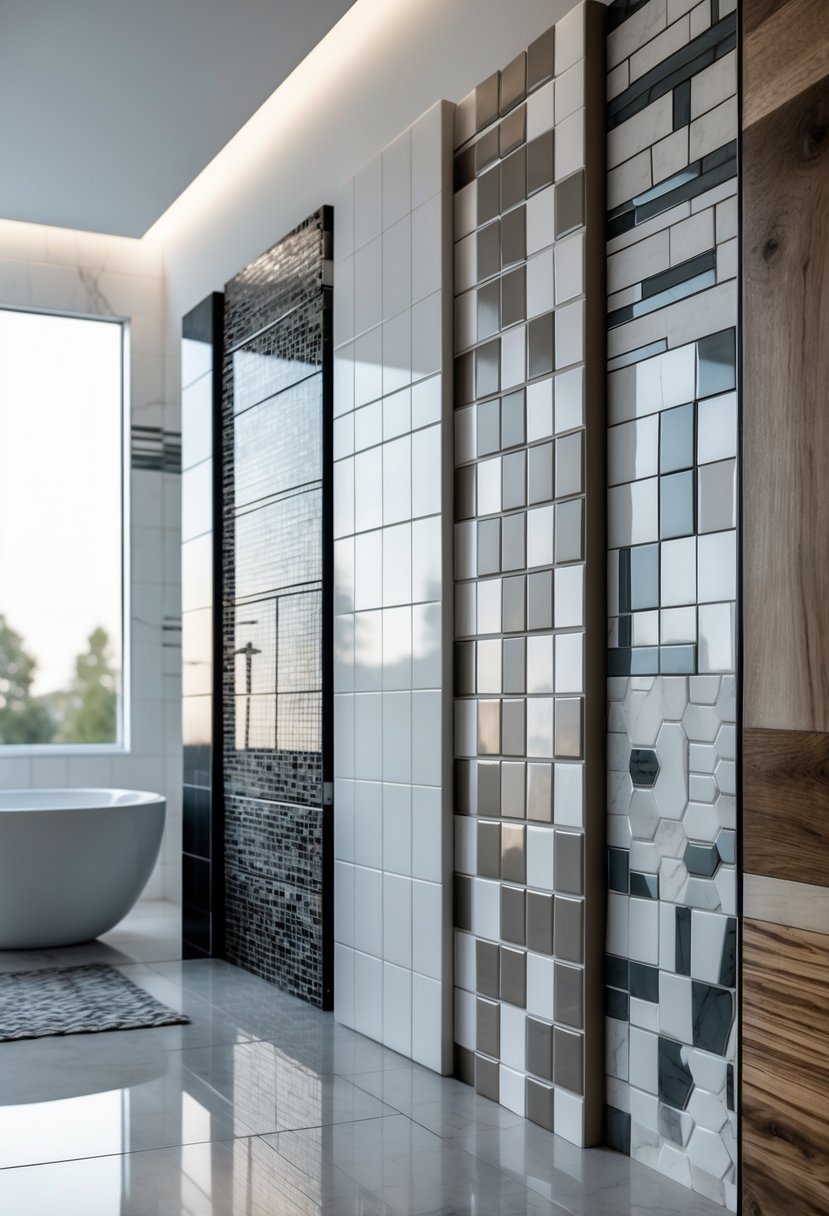
Selecting the proper tile can influence durability, maintenance, and overall appearance. Whether updating a small powder room or remodeling a large bathroom, tile design offers many ways to refresh and improve the space.
1) Classic white subway tiles with dark grout
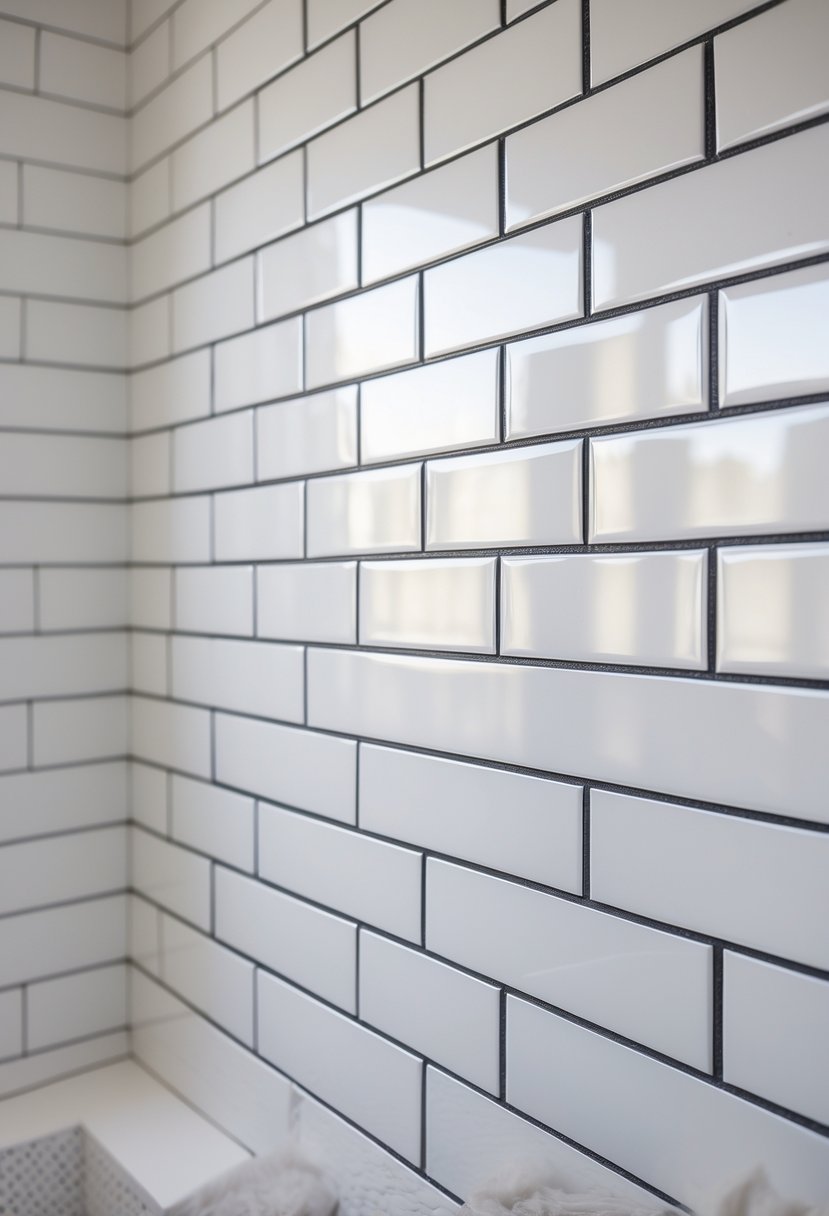
White subway tiles with dark grout create a clear and sharp look. The contrast between white tiles and dark grout lines defines the shape of each tile, adding depth to bathroom walls.
This design works well in both modern and traditional bathrooms. It highlights the tile pattern and can make small spaces appear more structured.
The combination is popular for showers and backsplashes because it is easy to clean and maintain. It also pairs nicely with wood or black fixtures, giving the bathroom a balanced and stylish feel.
2) Large-format marble tiles for floors
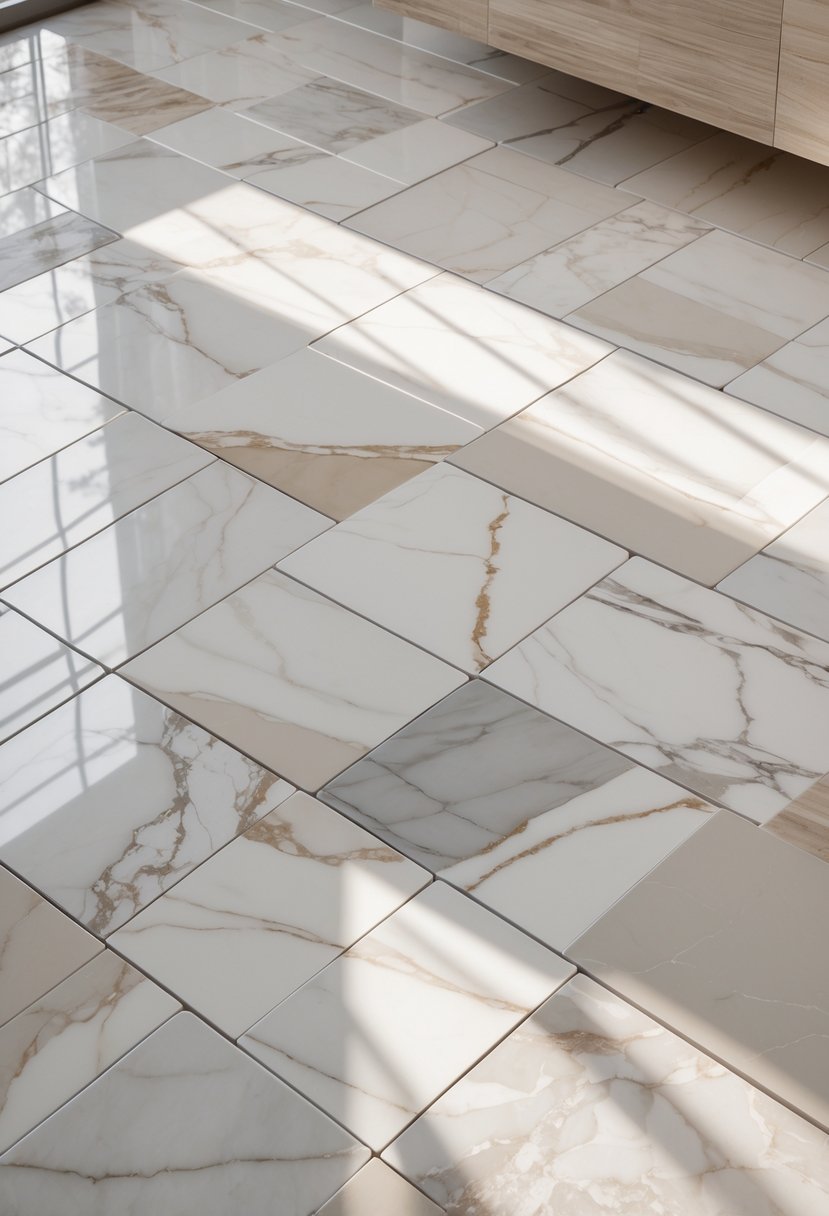
Large-format marble tiles are a popular choice for bathroom floors. They measure 12×24 inches or larger, covering more surface with fewer grout lines. This makes cleaning easier and reduces the buildup of dirt.
They create a smooth, elegant look that makes the bathroom feel more open and spacious. The natural patterns in marble add subtle interest without overwhelming the design.
These tiles are durable and water-resistant, suitable for wet areas like showers and floors. Their size helps speed up installation compared to smaller tiles, saving time in renovations.
3) Zellige handcrafted Moroccan tiles
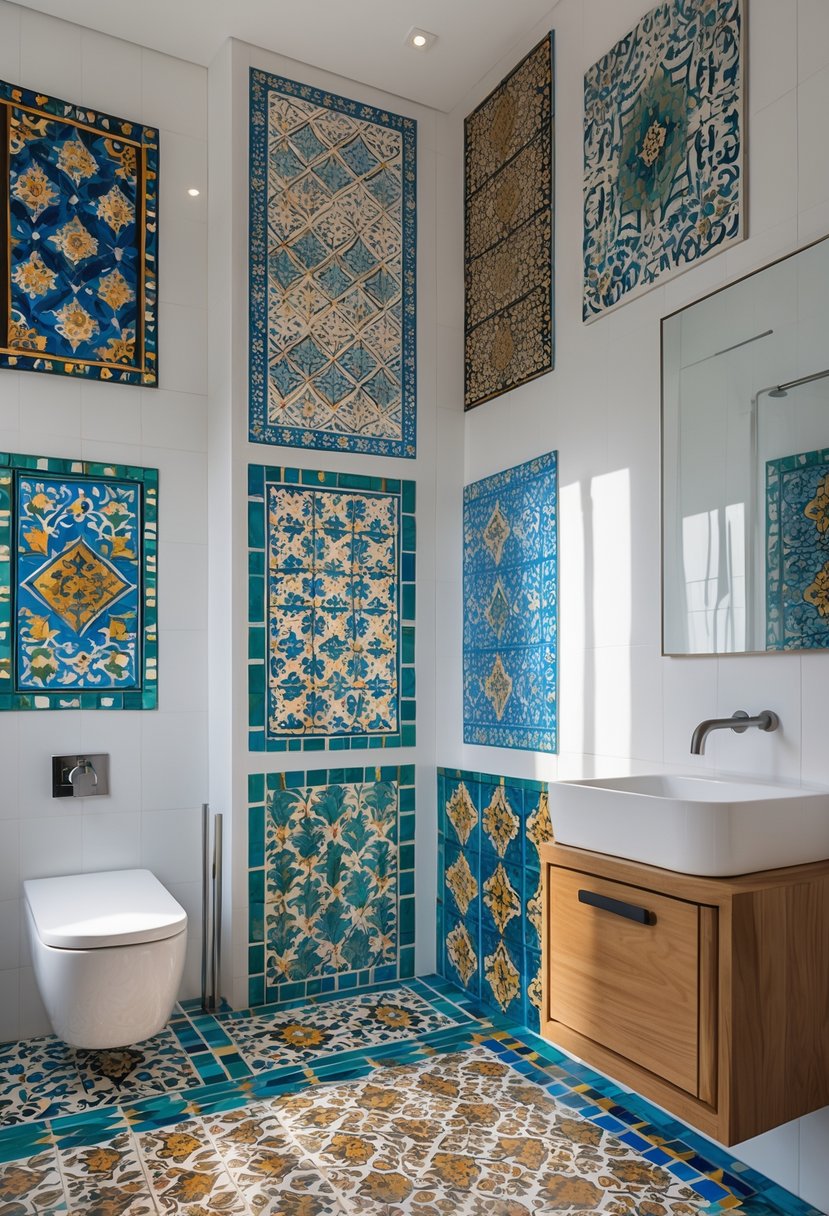
Zellige tiles are handmade pieces crafted by skilled artisans in Morocco. They have a unique, slightly uneven surface that adds texture and character to bathroom walls and floors.
These tiles come in many colors and shapes, often arranged in geometric patterns. Their rich history dates back centuries, making them a classic choice for those who want something authentic and durable.
Zellige tiles work well in showers or backsplashes, creating a calm and natural look. Their handmade nature means no two tiles are exactly alike, offering a unique style in every bathroom.
4) Pebble stone mosaic floors
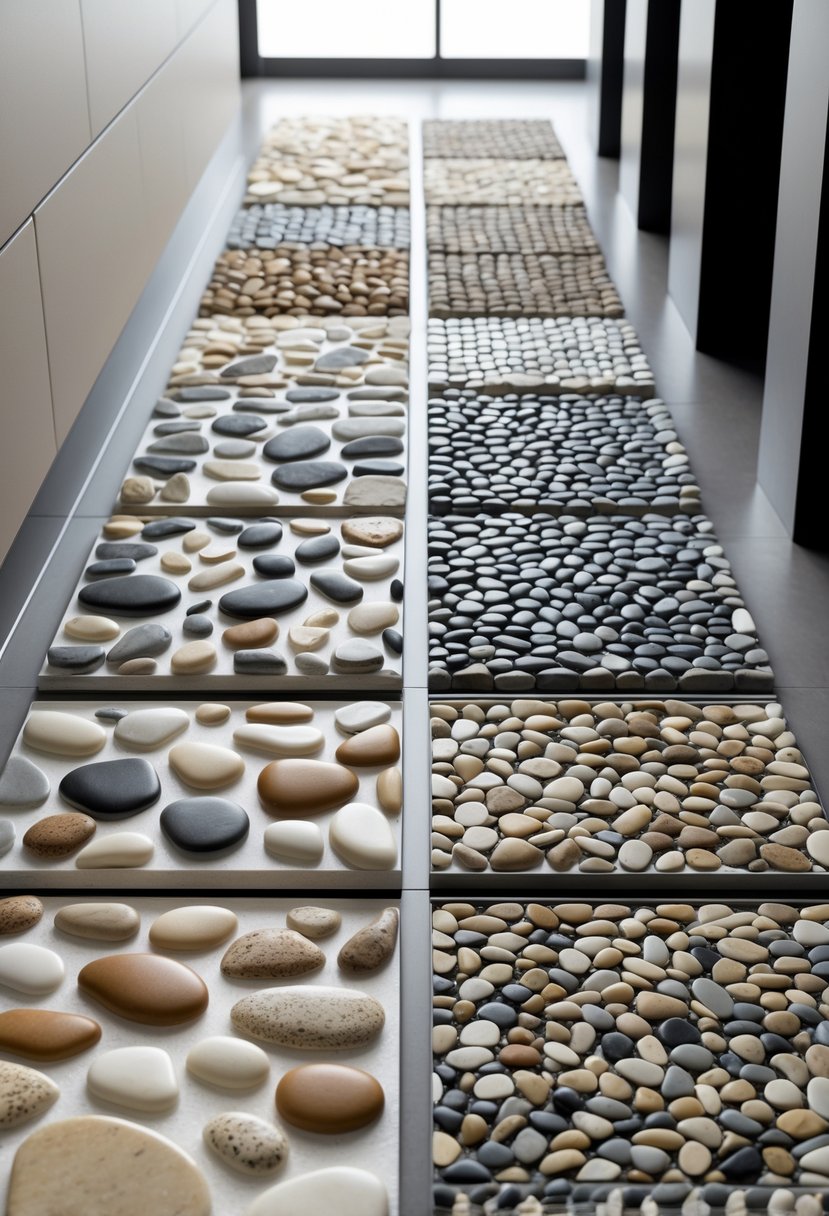
Pebble stone mosaic floors use small, smooth stones arranged closely together. This style gives the bathroom a natural, spa-like feel. The stones come in different shapes and earthy colors which add texture without overwhelming the space.
They are often chosen for their durability and slip resistance. Pebbles work well in both indoor and outdoor bathrooms. The tiles can fit many design styles, from modern to rustic.
Installing these floors can create a unique look. They pair well with neutral walls and simple fixtures. The natural stones bring a calm, grounded atmosphere to the room.
5) Bold geometric patterned ceramic tiles
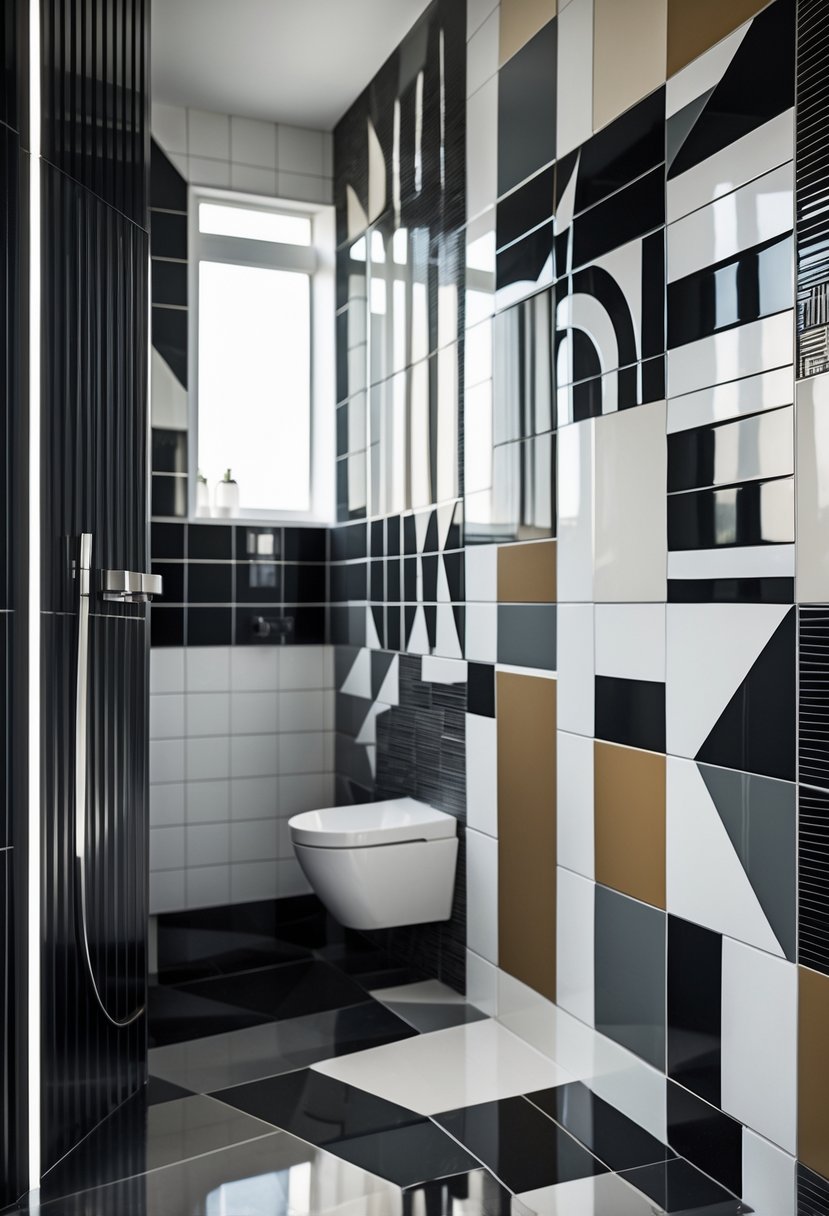
Bold geometric patterned ceramic tiles create strong visual interest in bathroom design. They use clear shapes like hexagons, diamonds, or chevrons arranged in repeating patterns. This approach draws attention without overwhelming the space.
These tiles work well on floors and walls, adding structure and modern style. Their precise patterns give bathrooms a clean and confident look that fits many design themes.
Ceramic tiles are durable and easy to maintain, making them practical for wet areas. Bold geometric patterns balance aesthetics with function, helping create an eye-catching but lasting bathroom design.
6) Biophilic tiles with natural textures
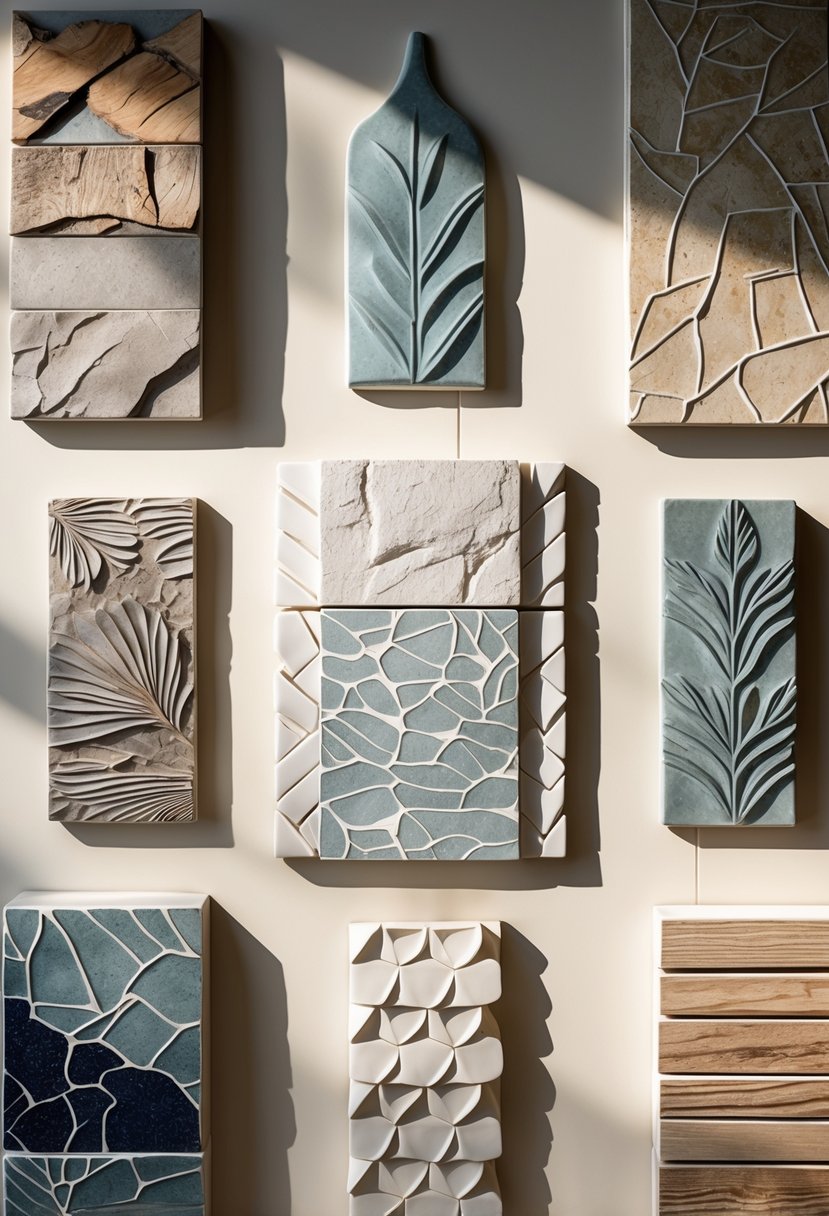
Biophilic tiles bring natural textures into the bathroom, adding a sense of calm and connection to nature. These tiles often mimic organic surfaces like stone, wood, or leaves, providing a tactile, earthy feel.
Textured tiles can create depth on walls or floors without overwhelming the space. They often have uneven surfaces, which reflect nature’s imperfect beauty.
Using tiles with subtle patterns inspired by nature helps make the bathroom feel more inviting. This design choice supports a relaxing environment while keeping the look simple and grounded.
7) Glossy glass tiles for shower walls
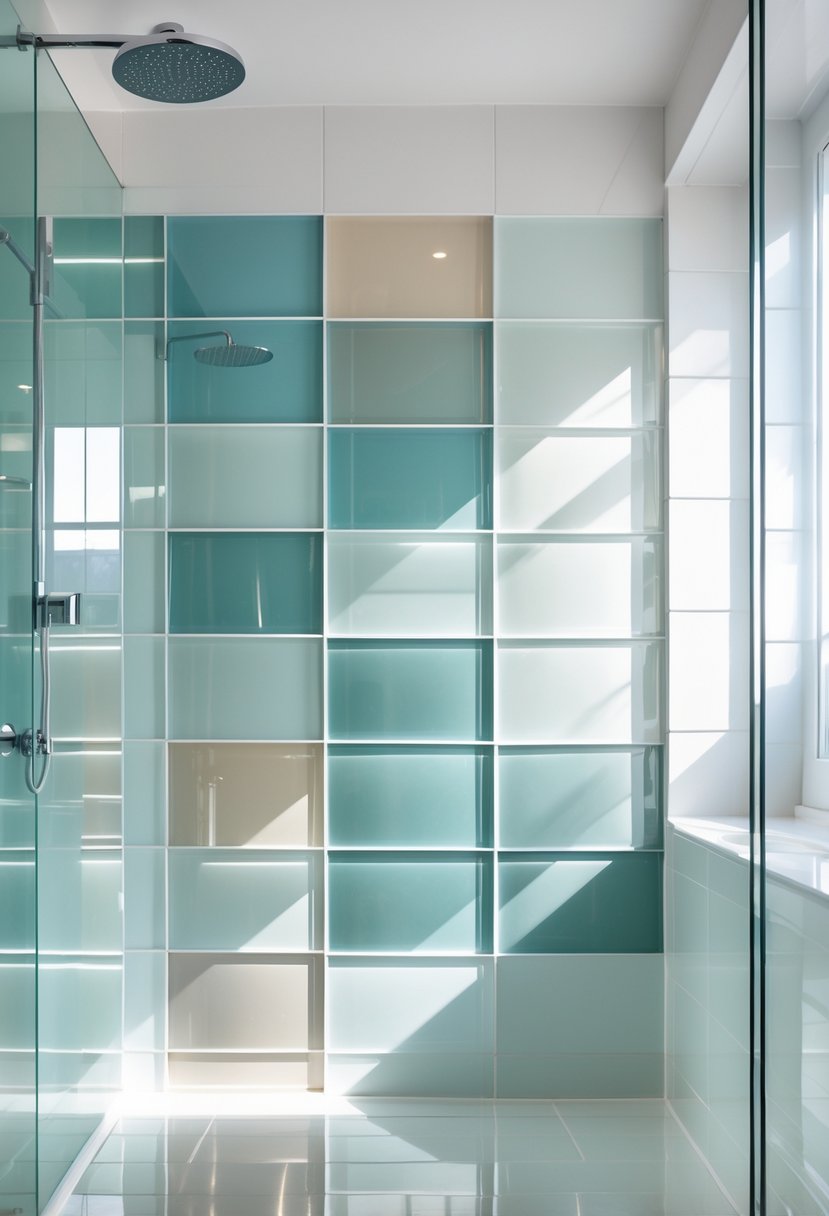
Glossy glass tiles give shower walls a bright, clean look. They reflect light well, making small bathrooms feel more open and fresh.
These tiles come in many colors and sizes. This variety lets homeowners create simple or bold designs that fit their style.
Glass tiles are water-resistant and easy to clean. They work well in wet areas and resist mold better than some other materials.
When installing, it is important to use the right mortar to keep the tiles secure. Proper installation also helps prevent water damage behind the walls.
Overall, glossy glass tiles add a modern and sleek touch to shower spaces without sacrificing durability.
Choosing the Right Bathroom Tile Materials
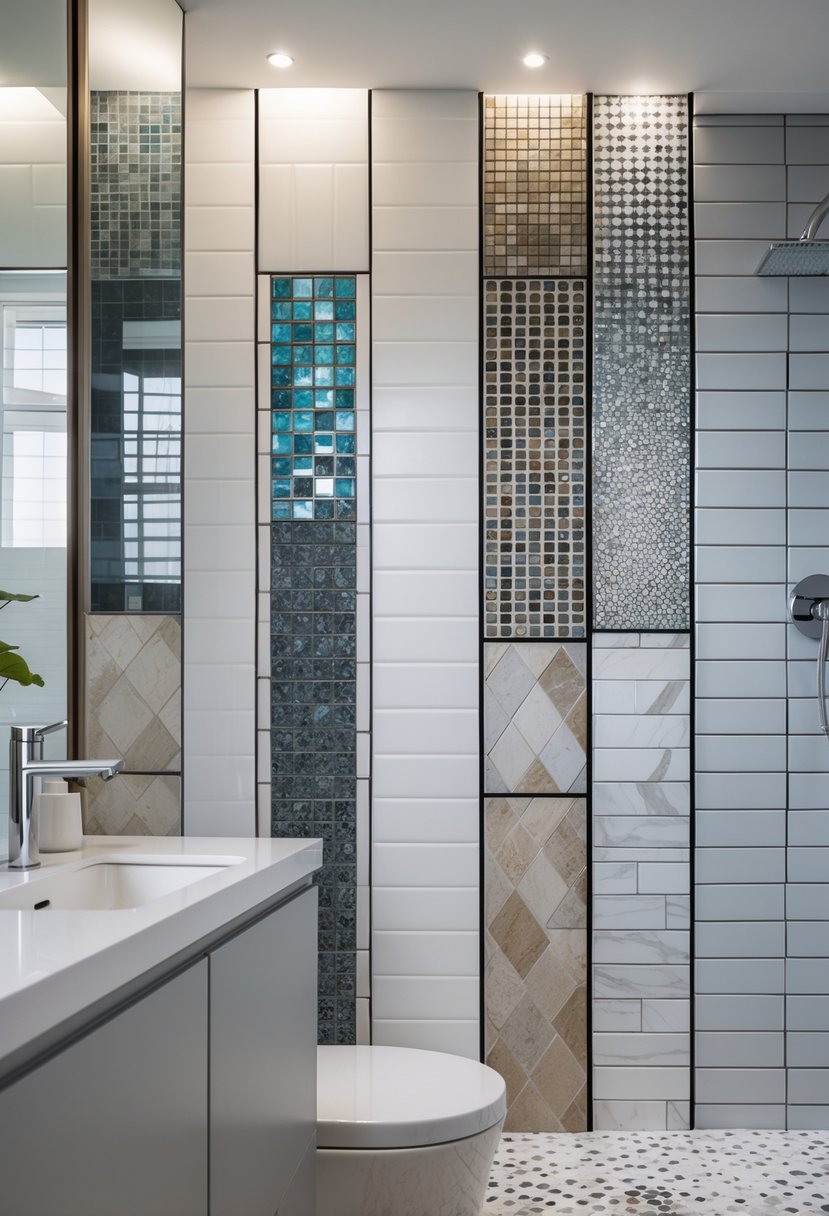
Selecting tile materials involves balancing durability, style, and maintenance needs. Different materials react to water and wear in unique ways, so understanding their features is key to lasting and attractive bathroom surfaces.
Ceramic vs. Porcelain Tiles
Ceramic tiles are made from red or white clay fired at lower temperatures. They tend to be softer and more porous than porcelain, making them easier to cut but less durable. Ceramic suits bathroom walls or low-traffic floors well.
Porcelain tiles are denser and fired at higher temperatures, making them more water- and stain-resistant. They work better for bathroom floors and areas exposed to moisture. Porcelain usually costs more but lasts longer and resists chips.
Both offer many colors and styles, but porcelain’s hard surface and low absorption rate make it the stronger choice where durability and moisture resistance are priorities.
Natural Stone Options
Natural stone tiles include marble, granite, slate, and travertine. Each offers a unique look with natural patterns and textures. Stone can add a premium feel but often requires more upkeep than ceramic or porcelain.
Stone is porous, so it needs sealing to prevent water damage and stains. Maintenance includes regular cleaning with pH-neutral products and resealing every few years.
Stone is best for walls and floors if the user wants a natural, elegant style and is willing to keep up with care routines to avoid damage and discoloration.
Water-Resistant Choices
Water resistance is critical in bathrooms to prevent mold, damage, and slips. Porcelain topped the list for water resistance, but some other options also work well.
Glass tiles are highly water-resistant and easy to clean, making them ideal for shower walls or backsplash areas. Vinyl tiles mimic other materials but are fully waterproof and soft underfoot.
Selecting slip-resistant finishes is important, especially for floor tiles. Textured or matte surfaces help reduce slipping, which improves safety for users.
Installation Tips for Lasting Results
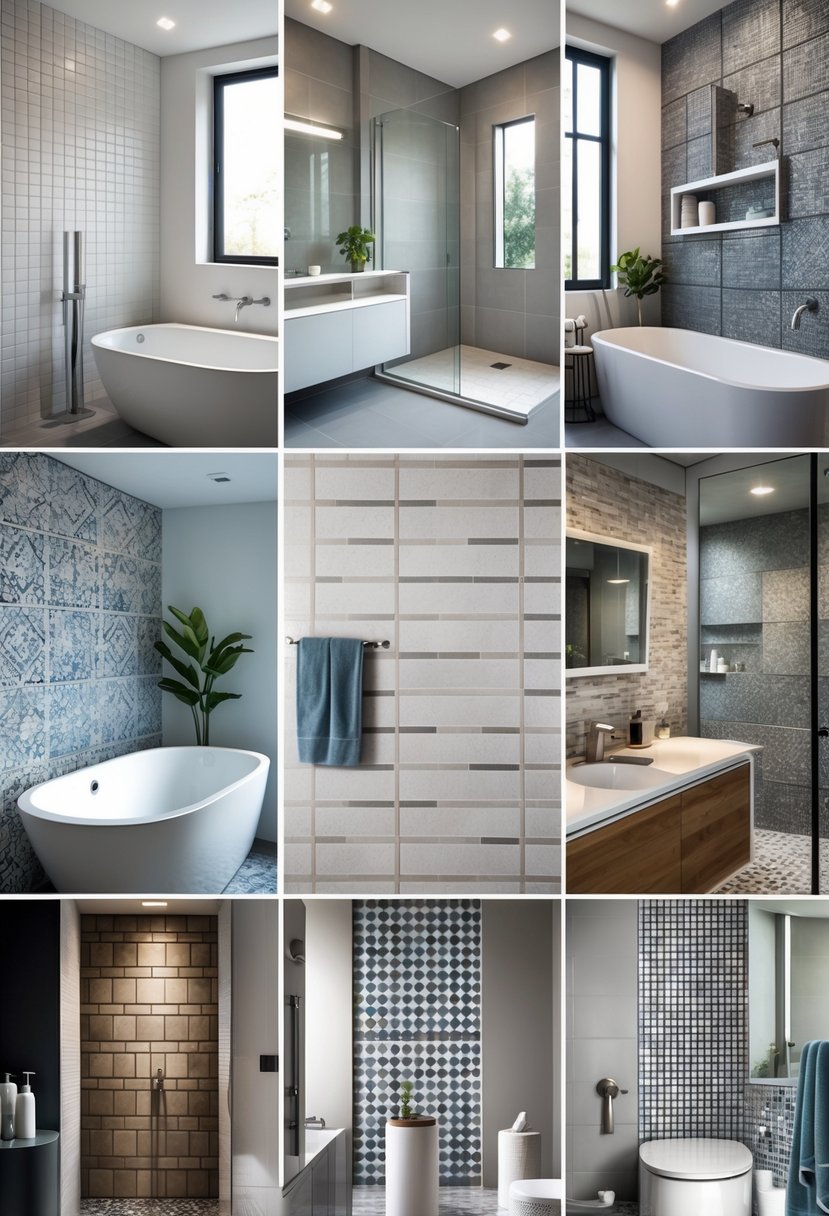
Proper preparation and the right finishing steps are crucial for a durable bathroom tile installation. Attention to surface conditions and careful selection of grout and sealant ensure the tiles stay secure and look good for years.
Surface Preparation Essentials
The surface must be clean, dry, and flat before starting tile installation. Any old adhesive, paint, or dirt should be fully removed to ensure good bonding.
He or she should fix cracks or holes with a suitable patching compound. Uneven surfaces can cause tiles to loosen or crack later.
It is important to use a waterproof backer board instead of drywall in wet areas. This prevents water damage behind the tiles.
Before applying mortar, applying a primer can improve adhesion, especially on porous or dusty surfaces. Using the right mortar type is also key—choose one designed for bathroom conditions.
Grout and Sealant Considerations
Choosing the correct grout is essential for strength and water resistance. Cement-based grout is common, but epoxy grout offers better durability and stain resistance.
Apply grout carefully, pressing it fully into the joints to avoid gaps or air pockets. Once dry, wipe off excess grout without damaging the seal.
Sealing grout lines helps prevent moisture and mold buildup. It should be done after the grout cures, generally about 72 hours later.
Edges, corners, and transitions require flexible sealant or caulk to handle movement. This prevents cracks and water leaks in these vulnerable areas.
Regular maintenance of grout and sealants extends the tile life and maintains the bathroom’s clean appearance.
Frequently Asked Questions
Bathroom tile design depends on factors like space, style, and function. Understanding trends, tile sizes, and quantity needs helps create an effective plan for any bathroom remodel. Each choice impacts the look and practicality of the room.
What are some modern tile design trends for small bathrooms?
Modern trends for small bathrooms include classic white subway tiles with dark grout for contrast. Large-format marble tiles are popular for floors because they create a sense of space. Zellige handcrafted Moroccan tiles add texture and interest without overwhelming the room.
How do you choose the ideal tile size for a bathroom renovation?
Tile size should match the room’s size and layout. Small tiles work well for intricate areas like shower floors or walls. Larger tiles, like big marble slabs, make the room feel bigger and are easier to clean. Balance visual appeal with practical use.
How many tiles are typically needed for a standard 7×7 bathroom?
A 7×7 bathroom usually requires about 50 to 70 square feet of tile. The exact amount depends on tile size and coverage area (floor, walls, shower). It’s smart to add 10-15% extra for cuts and mistakes during installation.

